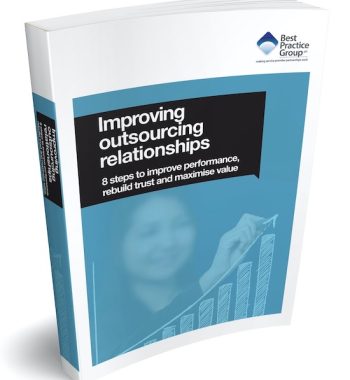 Imagine that there is a small-scale model of a planned development on display at your local council.
Imagine that there is a small-scale model of a planned development on display at your local council.
Although it gives a good representation of what the finished building will look like, most of the detail is lost in the scale. What you can’t see from the model is how the electrical system is wired, where the fire exits will be, or what the internal decor will look like.
For many organisations, their understanding of their business processes is limited to this small-scale analogy. And that fact is often the reason why required cost savings and service delivery improvements are not met.
Effective business process modelling can make an enormously beneficial difference to the operations of an organisation, and yet many do not execute well on this front. In this article, I intend to explore why business modelling is so beneficial, and why so many organisations, in particular local authorities, aren’t getting it right.
The Benefits of Business Process Modelling
We once worked with a local authority who had a large number of people working on a particular aspect of service delivery. Because of the size of the workforce, the employees were split into several teams. Although each team was working towards the same objective, they worked independently of each other.
From that original split, natural variations in process began to emerge. By the time we came onto the scene, this local authority had several teams, many working in completely different ways, all in an attempt to reach the same end goal. And the kicker was this — no one knew which approach was the most effective.
Effective business process modelling eventually enabled this local authority to assess the individual worth of each process, pick the “winner”, and put that specific process into effect across all of the teams.
That is a great example of how business process modelling is highly effective in terms of improving workflows. But it also allows you to see “the big picture”, and eradicate repetitions and flaws across the entire berth of your organisation, without adversely affecting the quality of service delivery.
A great example of this in action is the recently introduced “Tell Us Once” scheme, which means that recently bereaved family members only have to contact the government once in order to register a death. That confirmation is then efficiently passed along to all relevant government branches (such as the DVLA and HMRC). The constituent doesn’t have to contact multiple bodies of government, and local authorities expend far less resources to achieve the same end.
Why Are Some Organisations Struggling with Business Process Modelling?
If there is one thing you cannot doubt amongst public sector organisations, it is the work ethic amongst the majority of their employees. So why do so many fail in their objectives to improve service delivery and reduce costs?
The problem is that you have a huge group of highly focused and hardworking people, who are all completely wrapped up in their day-to-day work. In what is an extremely cash-strapped culture, the focus is very much on dealing with the immediate issues — firefighting. What gets neglected is the “luxury” of stepping back and looking at the bigger picture.
Although it can seem counterintuitive at the time, going through the process of effective business modelling (i.e. working on the “theory”, rather than something practical) is really the only long-term solution to delivering the same (or improved) services at a lower cost.
Ultimately, it’s about working smarter, rather than harder.
Effective Business Process Modelling
The key to driving efficiency is in taking a top-down view of your entire organisation — from concept to customer.
Consider how all of the different departments within your organisation interact. Can you spot repetitions? Are there opportunities for efficiency savings? The goal should be to construct a pictorial model which can be understood by all relevant parties — from legal to technical. True efficiencies can only be driven when all the major players are on the same page.
It may be necessary to bring in a professional to assist with the process. In fact, if you do not have in-house resources with the appropriate experience and expertise, it becomes something of a necessity. Not only will the addition of man hours relax the responsibilities felt by those who are no doubt already overworked, but you will end up with a far better model.
It will be extremely difficult for your organisation to improve in terms of efficiency and service delivery without there being a clear map of processes — from top to bottom. You need to be in a position where you can identify the purpose and assess the efficiency of each cog in the engine. Without the kind of top-down insight that effective business process modelling brings, you leave far too much to chance.
Creative Commons image courtesy of FutUndBeidl

